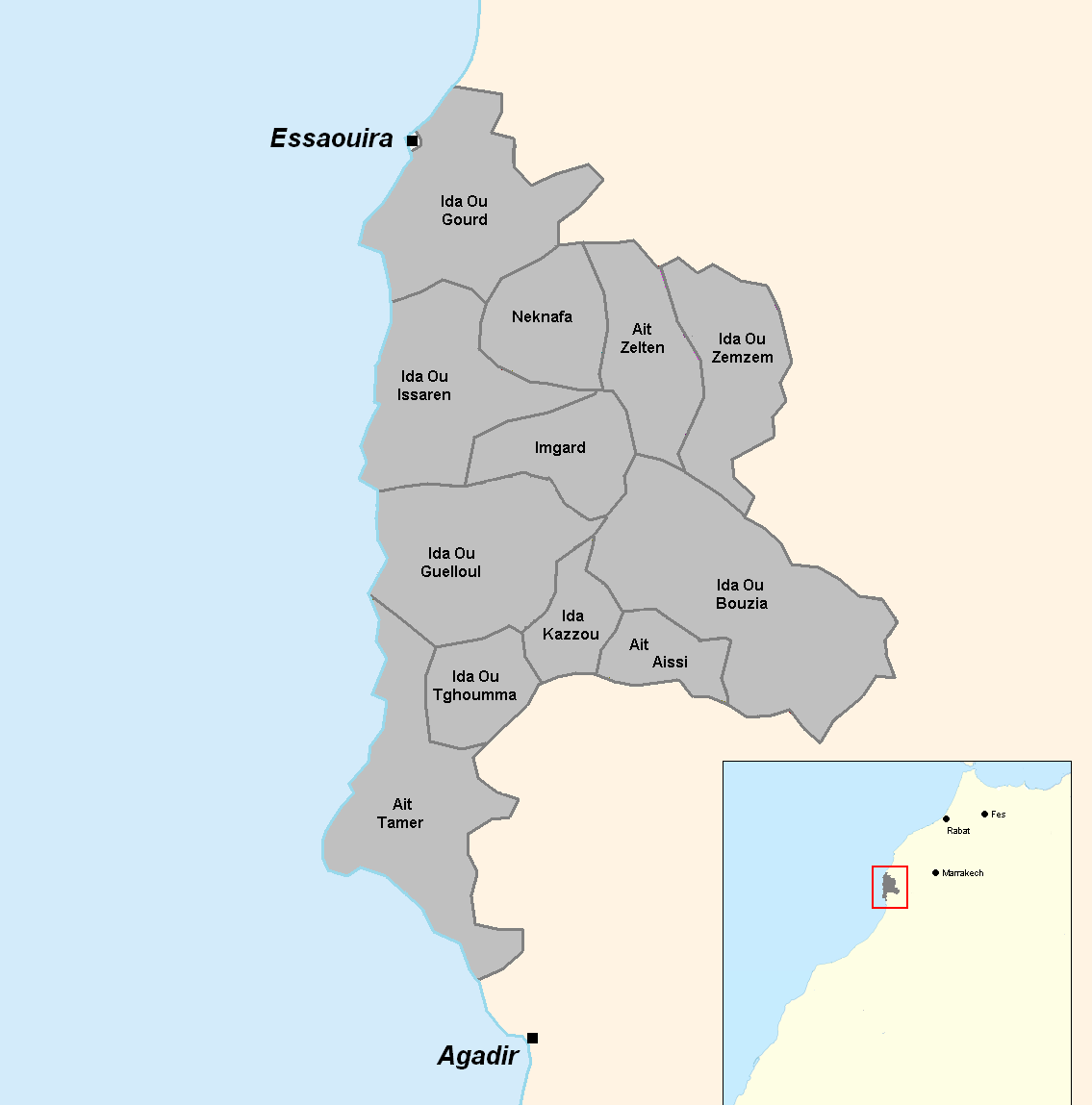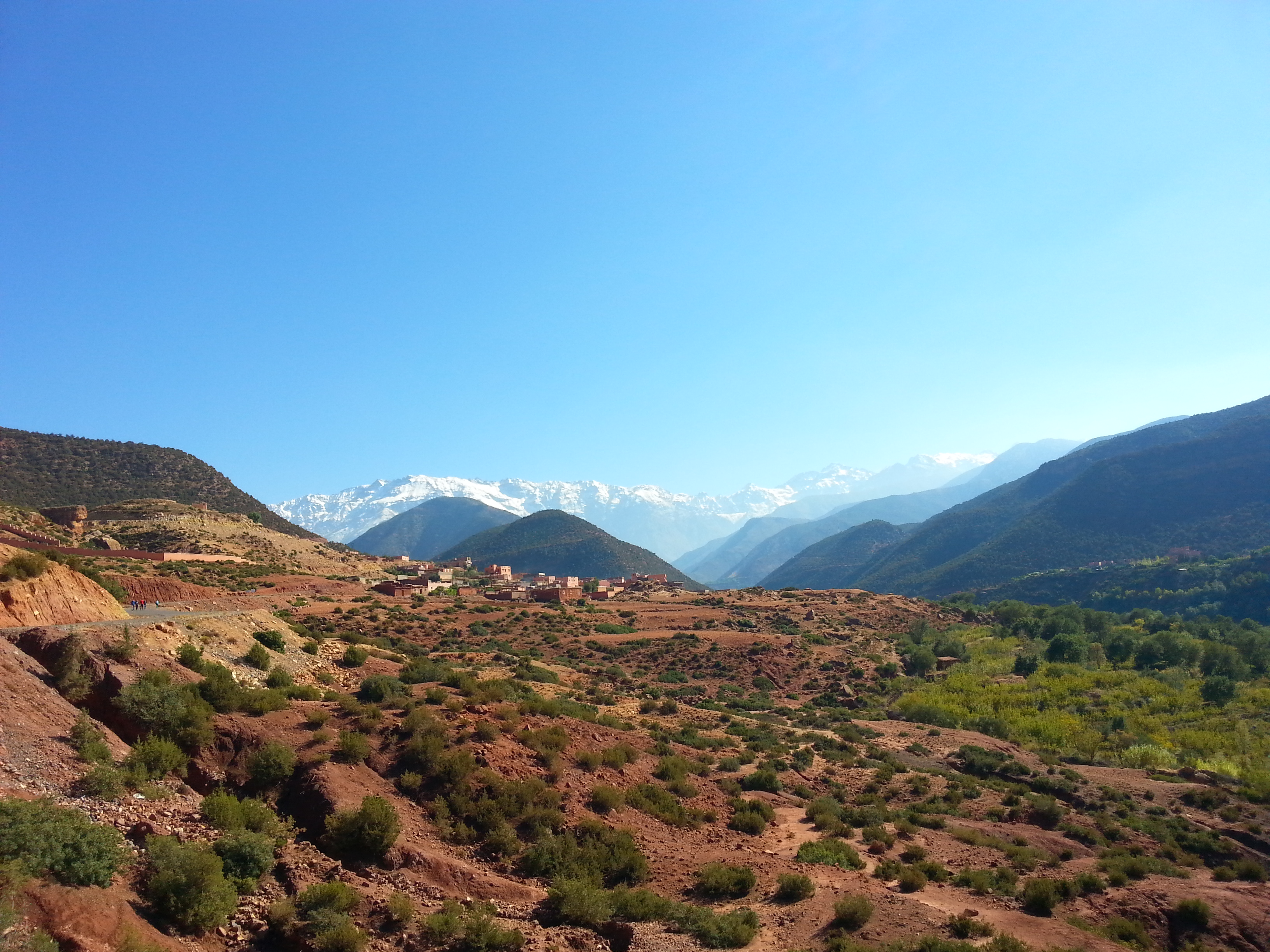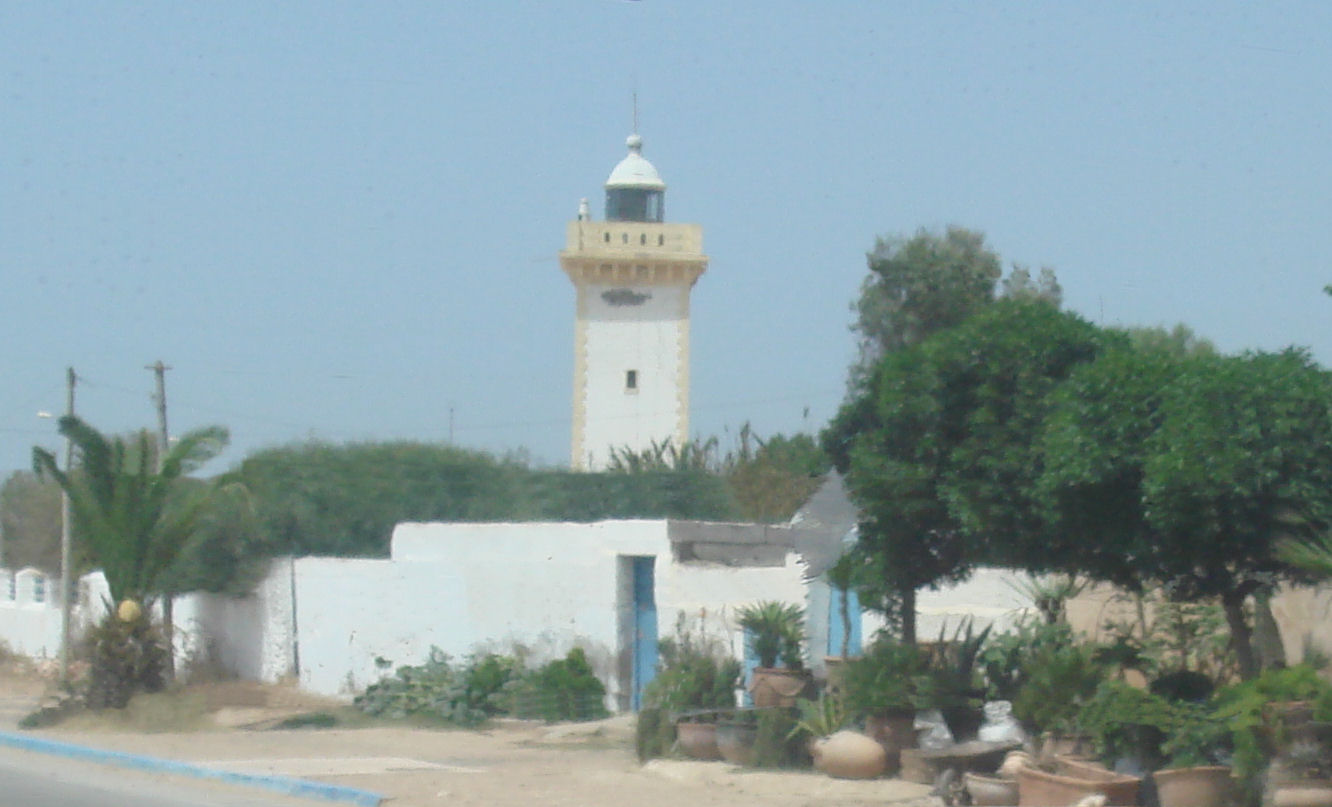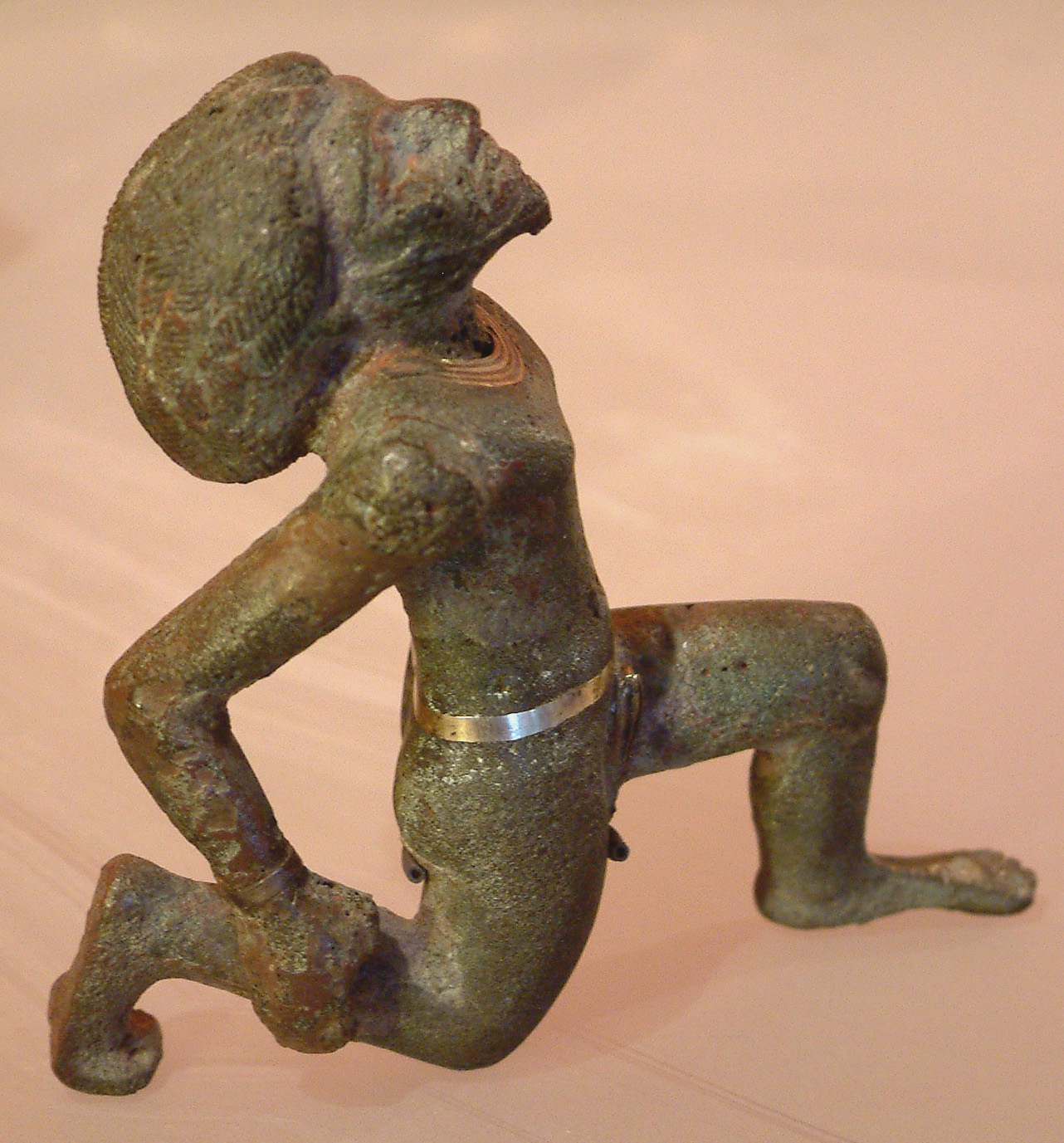|
Haha (tribe)
The Haha or Iḥaḥan (in Shilha) ( ar, حاحا, ''Ḥāḥā'') is a Moroccan confederation of Berber tribes in the Western High Atlas in Morocco.C. Agabi, « Haha », Encyclopédie berbère, 22 , Hadrumetum – Hidjaba, Aix-en-Provence, Edisud, 2000, p. 3326-332/ref> They identify themselves as a tribal confederacy of the Shilha people, Chleuh people, and speak the Shilha language. Their region stretches along from the city of Essaouira south to the Souss Valley, mainly on the Atlantic coast. References See also * Masmuda The Masmuda ( ar, المصمودة, Berber: ⵉⵎⵙⵎⵓⴷⵏ) is a Berber tribal confederation of Morocco and one of the largest in the Maghreb, along with the Zanata and the Sanhaja. They were composed of several sub-tribes: Berghouatas, ... Berbers in Morocco Berber peoples and tribes Masmuda Moroccan tribes Confederations {{Africa-ethno-group-stub ... [...More Info...] [...Related Items...] OR: [Wikipedia] [Google] [Baidu] |
Shilha Language
, now more usually known as Tashelhit , is a Berber language spoken in southwestern Morocco. The endonym is , and in recent English publications the name of the language is often rendered ''Tashelhit'', ''Tashelhiyt'' or ''Tashlhiyt''. In Moroccan Arabic the language is called , from which the English name ''Shilha'' is derived. When referring to the language, anthropologists and historians prefer the name "Shilha", which is in the Oxford English Dictionary (OED). Linguists writing in English prefer "Tashelhit" (or a variant spelling). In French sources the language is called , or . Shilha is spoken in an area covering c. 100,000 square kilometres, making the language area approximately the size of Iceland, or the US state of Kentucky. The area comprises the western part of the High Atlas mountains and the regions to the south up to the Draa River, including the Anti-Atlas and the alluvial basin of the Souss River. The largest urban centres in the area are the coastal city of ... [...More Info...] [...Related Items...] OR: [Wikipedia] [Google] [Baidu] |
Berbers
, image = File:Berber_flag.svg , caption = The Berber ethnic flag , population = 36 million , region1 = Morocco , pop1 = 14 million to 18 million , region2 = Algeria , pop2 = 9 million to ~13 million , region3 = Mauritania , pop3 = 2.9 million , region4 = Niger , pop4 = 2.6 million, Niger: 11% of 23.6 million , region5 = France , pop5 = 2 million , region6 = Mali , pop6 = 850,000 , region7 = Libya , pop7 = 600,000 , region8 = Belgium , pop8 = 500,000 (including descendants) , region9 = Netherlands , pop9 = 467,455 (including descendants) , region10 = Burkina Faso , pop10 = 406,271, Burkina Faso: 1.9% of 21.4 million , region11 = Egypt , pop11 = 23,000 or 1,826,580 , region12 = Tunisia , pop12 ... [...More Info...] [...Related Items...] OR: [Wikipedia] [Google] [Baidu] |
High Atlas
High Atlas, also called the Grand Atlas ( ar, الأطلس الكبير, Al-Aṭlas al-Kabīr; french: Haut Atlas; shi, ⴰⴷⵔⴰⵔ ⵏ ⴷⵔⵏ ''Adrar n Dern''), is a mountain range in central Morocco, North Africa, the highest part of the Atlas Mountains. The High Atlas rises in the west at the Atlantic Ocean and stretches in an eastern direction to the Moroccan-Algerian border. At the Atlantic and to the southwest the range drops abruptly and makes an impressive transition to the coast and the Anti-Atlas range. To the north, in the direction of Marrakech, the range descends less abruptly. The range includes Jbel Toubkal, which at is the highest in the range and lies in Toubkal National Park. The range serves as a weather system barrier in Morocco running east–west and separating the Sahara from the Mediterranean and continental zones to the north and west. In the higher elevations of the massif, snow falls regularly, allowing winter sports. Snow lasts well into late ... [...More Info...] [...Related Items...] OR: [Wikipedia] [Google] [Baidu] |
Morocco
Morocco (),, ) officially the Kingdom of Morocco, is the westernmost country in the Maghreb region of North Africa. It overlooks the Mediterranean Sea to the north and the Atlantic Ocean to the west, and has land borders with Algeria to the east, and the disputed territory of Western Sahara to the south. Mauritania lies to the south of Western Sahara. Morocco also claims the Spanish exclaves of Ceuta, Melilla and Peñón de Vélez de la Gomera, and several small Spanish-controlled islands off its coast. It spans an area of or , with a population of roughly 37 million. Its official and predominant religion is Islam, and the official languages are Arabic and Berber; the Moroccan dialect of Arabic and French are also widely spoken. Moroccan identity and culture is a mix of Arab, Berber, and European cultures. Its capital is Rabat, while its largest city is Casablanca. In a region inhabited since the Paleolithic Era over 300,000 years ago, the first Moroccan s ... [...More Info...] [...Related Items...] OR: [Wikipedia] [Google] [Baidu] |
Shilha People
The Shilha people (, ), or Ishelhien, or Chleuh are a Berber subgroup primarily inhabiting the Anti Atlas, High Atlas, Sous Valley, and Soussi coastal regions of Morocco. Overview The Shilha people traditionally call themselves ''ishelhien''. This endonym is rendered as les ''Chleuh'' in French. The Ishelhien are also known as ''Shluh'' and ''Schlöh''. Among Arabic speakers, ''Chleuh'' serves as an appellation for Berbers generally, although ''Imazighen'' is the proper Berber self-name for Berbers as a whole. The Shilha people live mainly in Morocco's southern Atlantic coast, the High Atlas Mountains, the Anti Atlas mountains, and the Sous Valley. They are of Berber origin, which along with the Berber people, includes other ethnic subgroups such as the Tuareg, Rif, Kabyle, Shawia and Guanche. The Shilha people are a part of Morocco's Berber-speaking community, and the southernmost residing Berber population. History In antiquity, Berbers traded with the Phoenicians and Ca ... [...More Info...] [...Related Items...] OR: [Wikipedia] [Google] [Baidu] |
Essaouira
Essaouira ( ; ar, الصويرة, aṣ-Ṣawīra; shi, ⵜⴰⵚⵚⵓⵔⵜ, Taṣṣort, formerly ''Amegdul''), known until the 1960s as Mogador, is a port city in the western Moroccan region of Marakesh-Safi, on the Atlantic coast. It has 77,966 inhabitants as of 2014. The foundation of the city of Essaouira was the work of the Moroccan 'Alawid sultan Mohammed bin Abdallah, who made an original experiment by entrusting it to several renowned architects in 1760, in particular Théodore Cornut and Ahmed al-Inglizi, who designed the city using French captives from the failed French expedition to Larache in 1765, and with the mission of building a city adapted to the needs of foreign merchants. Once built, it continued to grow and experienced a golden age and exceptional development, becoming the country's most important commercial port but also its diplomatic capital between the end of the 18th century and the first half of the 19th century. Name and etymology The nam ... [...More Info...] [...Related Items...] OR: [Wikipedia] [Google] [Baidu] |
Souss
The Sous region (also spelt Sus, Suss, Souss or Sousse) ( ar, سوس, sūs, shi, ⵙⵓⵙ, sus) is an area in mid-southern Morocco. Geologically, it is the alluvial basin of the Sous River (''Asif n Sus''), separated from the Sahara desert by the Anti-Atlas Mountains. The natural vegetation in the Sous region is savanna dominated by the argan (''Argania spinosa''), a local endemic tree found nowhere else; part of the area is now a UNESCO Biosphere Reserve to protect this unique habitat. The region of Sous is generally fertile and has a high agricultural production. History Medieval Arabic geographers generally divided the Sous region into two distinct sub-regions: ''al-Sūs al-Aqṣā'', or "farther Sus", and ''al-Sūs al-Adnā'', or "nearer Sus". Sus al-Aqsa consisted of the southern/western part, and Sus al-Adna consisted of the northern/eastern part; however, there were never any precise boundaries between the two. The capital of the Sous was at Igli. There was also a ... [...More Info...] [...Related Items...] OR: [Wikipedia] [Google] [Baidu] |
Masmuda
The Masmuda ( ar, المصمودة, Berber: ⵉⵎⵙⵎⵓⴷⵏ) is a Berber tribal confederation of Morocco and one of the largest in the Maghreb, along with the Zanata and the Sanhaja. They were composed of several sub-tribes: Berghouatas, Ghomaras (Ghomarids), Hintatas (Hafsids), Tin Malel, Hergha, Genfisa, Seksiwa, Gedmiwa, Hezerdja, Urika, Guerouanes, Bni M'tir, Hezmira, Regraga, Haha les Banou Maghus, Gilawa and others. Today, the Masmuda confederacy largely corresponds to the speakers of the Shilha (Tachelhit) Berber variety, whereas other clans, such as Regraga have adopted Arabic. History The Masmuda settled large parts of Morocco, and were largely sedentary and practised agriculture. The residence of the Masmuda aristocracy was Aghmat in the High Atlas mountains. From the 10th century the Berber tribes of the Sanhaja and Zanata groups invaded the lands of the Masmuda, followed from the 12th century onwards by Arab Bedouins (see Banu Hilal). Ibn Tumart united th ... [...More Info...] [...Related Items...] OR: [Wikipedia] [Google] [Baidu] |
Berbers In Morocco
, image = File:Berber_flag.svg , caption = The Berber ethnic flag , population = 36 million , region1 = Morocco , pop1 = 14 million to 18 million , region2 = Algeria , pop2 = 9 million to ~13 million , region3 = Mauritania , pop3 = 2.9 million , region4 = Niger , pop4 = 2.6 million, Niger: 11% of 23.6 million , region5 = France , pop5 = 2 million , region6 = Mali , pop6 = 850,000 , region7 = Libya , pop7 = 600,000 , region8 = Belgium , pop8 = 500,000 (including descendants) , region9 = Netherlands , pop9 = 467,455 (including descendants) , region10 = Burkina Faso , pop10 = 406,271, Burkina Faso: 1.9% of 21.4 million , region11 = Egypt , pop11 = 23,000 or 1,826,580 , region12 = Tunisia , pop12 ... [...More Info...] [...Related Items...] OR: [Wikipedia] [Google] [Baidu] |
Berber Peoples And Tribes
Berber or Berbers may refer to: Ethnic group * Berbers, an ethnic group native to Northern Africa * Berber languages, a family of Afro-Asiatic languages Places * Berber, Sudan, a town on the Nile People with the surname * Ady Berber (1913–1966), Austrian film actor * Alejandro Berber (born 1987), Mexican footballer * Anita Berber (1899–1928), German dancer, actress, and writer * Fatiha Berber (1945–2015), Algerian actress * Felix Berber (1871–1930), German violinist * Fritz Berber (1898–1984), member of the Nazi administration in Germany until 1943 * Kübra Berber (born 1996), Turkish women's footballer * Mersad Berber (1940–2012), Bosnian painter * Oğuzhan Berber (born 1992), Turkish footballer * Philip Berber (born 1958), Irish American entrepreneur and philanthropist * Yolande Berbers, Belgian computer scientist * , born 1987), Russian actress Other uses * Berber carpet, a type of carpet hand-woven by the Berber autochthones in North Africa and the Sahara * B ... [...More Info...] [...Related Items...] OR: [Wikipedia] [Google] [Baidu] |
Moroccan Tribes
Moroccan may refer to: * Something or someone from, or related to the country of Morocco * Moroccan people * Moroccan Arabic, spoken in Morocco * Moroccan Jews See also * Morocco leather Morocco leather (also known as Levant, the French Maroquin, or German Saffian from Safi, Morocco, Safi, a Moroccan town famous for leather) is a Vegetable tanning, vegetable-tanned leather known for its softness, pliability, and ability to take c ... * * {{disambig Language and nationality disambiguation pages ... [...More Info...] [...Related Items...] OR: [Wikipedia] [Google] [Baidu] |





